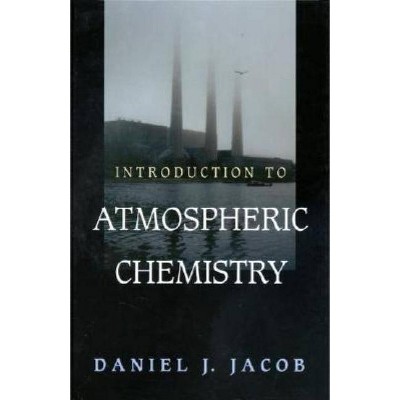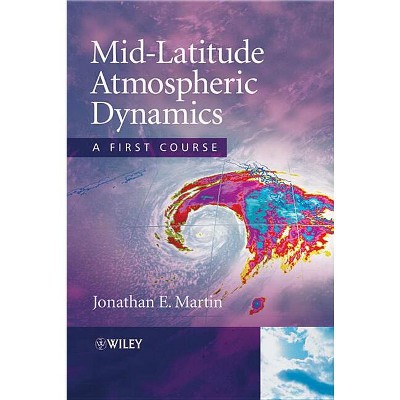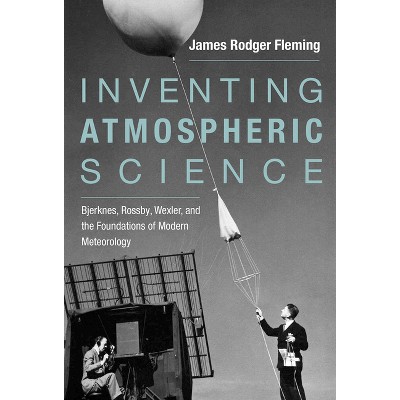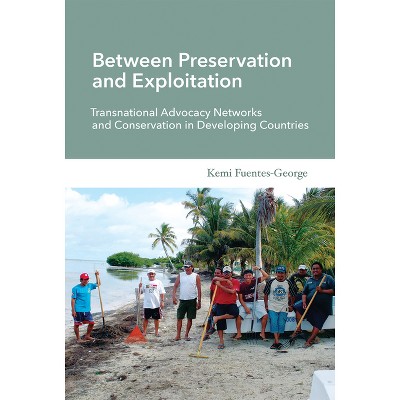Sponsored

The Atmospheric Environment - by Michael B McElroy (Hardcover)
In Stock
Sponsored
About this item
Highlights
- This comprehensive introduction to the physics and chemistry of Earth's atmosphere explains the science behind some of the most critical and intensely debated environmental controversies of our day.
- About the Author: Michael B. McElroy is Gilbert Butler Professor of Environmental Studies at Harvard University, where he also serves as Director of the Center for the Environment.
- 344 Pages
- Science, Earth Sciences
Description
Book Synopsis
This comprehensive introduction to the physics and chemistry of Earth's atmosphere explains the science behind some of the most critical and intensely debated environmental controversies of our day. In it, one of the world's leading experts on planetary environments presents the background necessary to assess the complex effects of human activity on our atmosphere and climate.
Unique in its breadth and depth of coverage, The Atmospheric Environment includes a survey of Earth's climatic history to provide a context for assessing the changes underway today. It is written for--and will be of lasting value to--a varied audience, including not only students but also professional scientists and others seeking a sophisticated but readable introduction to the frontiers of contemporary research on biogeochemistry, depletion of stratospheric ozone, tropospheric air pollution, and climatology. The book covers both the chemistry and physics of the atmosphere with an account of relevant aspects of ocean science, treats atmospheric science and the climate as an integrated whole, and makes explicit the policy implications of what is known. Its critical account of steps taken by the international community to address the issue of climatic change highlights the challenge of dealing with a global issue for which the political and economic stakes are high, where uncertainties are common, and where there is an urgent need for clear thinking and informed policy. The book also sketches key gaps in our knowledge, outlining where we need to go to fully understand the impact of our actions on the climate. Thorough, timely, and authoritative, this is the book to consult for answers about some of the thorniest and most pressing environmental questions that we face.From the Back Cover
"This book is an excellent introduction to the function of the atmosphere by a leader in the field. It offers an up-to-date view of the atmosphere and its responses to human perturbations, including global atmospheric change."--Louis A. Derry, Cornell University
"This book succeeds in providing an appealing and substantive introduction to atmospheric science that is understandable to nonspecialists. Written in a concise but informal style that works well, it conveys a range of abstract concepts in simple terms and covers both atmospheric physics and chemistry with detail and expertise."--Ralph Keeling, Scripps Institution of Oceanography
Review Quotes
"Michael McElroy's impressive new book is a bargain, for it is really two books in one. Approximately the first half is an accessible general atmospheric science text, and almost all the rest of the book is a comprehensive introduction to atmospheric chemistry. . . . The entire book is authoritative, balanced, up-to-date and exceptionally well-written."---Richard C. J. Somerville, American Journal of Physics
"The breadth of this book sets it apart from most other introductory texts on either atmospheric chemistry or climate change, which are typically more restrictive in their focus to one of those two areas. . . . Overall, this is an excellent book. . . . McElroy has done a service to the community in creating a textbook with the potential to help create a future pool of educated people with a thorough yet broad background in the complex web of interactions related to human effects on the atmospheric environment."---Drew T. Shindell, Bulletin of the American Meteorological Society
About the Author
Michael B. McElroy is Gilbert Butler Professor of Environmental Studies at Harvard University, where he also serves as Director of the Center for the Environment. He participated in the early Mariner missions to Mercury, Venus, Mars, Jupiter, and Saturn and the Viking mission to Mars. The author of more than 200 papers on atomic physics and planetary atmospheres, he is a Fellow of the American Academy of Arts and Sciences, the International Academy of Astronautics, the American Geophysical Union, and the American Association for the Advancement of Science.










